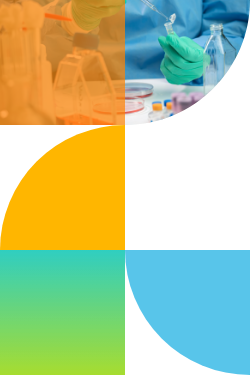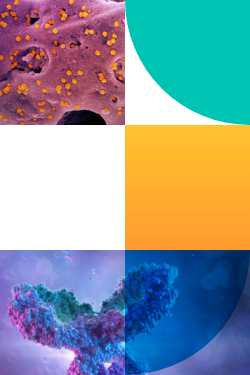As I sat in the bustling meeting room at SapioCon 2025, I couldn’t help but feel excited about the future of drug discovery. Dr. Rajesh Kumar, Senior Director of Structural Biology at Schrödinger, delivered a keynote presentation on the company’s innovative approaches that left me in awe of how far we’ve come in accelerating the process of bringing life-saving drugs to market.
Dr. Kumar introduced us to Schrödinger, a New York-based company that has been at the forefront of drug discovery for over 30 years. With 11 global sites and more than 900 employees, Schrödinger has established itself as a leader in applying physics-based modeling, machine learning (ML), and other solutions including the Sapio Sciences Platform, to revolutionize how we discover drugs.
I was impressed by their portfolio: three drug development candidates in clinical trials and more than eight active internal programs in addition to multiple collaborative programs. It’s clear that Schrödinger’s methods are producing tangible results in the pharmaceutical industry. By digitizing their workflows and integrating Sapio’s ELN (electronic lab notebook) software, Schrödinger continues to advance one of its goals—making drug discovery faster.
A game changer for drug discovery
For decades, drug discovery has relied on high-throughput screening of millions of compounds, a process that typically takes 6–12 months just to identify a handful of potential candidates. Dr. Kumar explained how Schrödinger’s computational approach completely disrupts this approach.
Using physics-based simulations and free energy perturbation (FEP), Schrödinger can screen billions of compounds in just one week, narrowing them down to a small number of promising candidates. Instead of conducting thousands of lab experiments, they use computational predictions to calculate properties like binding affinity and solubility before any real-world testing begins.
However, even the most advanced computational predictions need experimental validation.
Building a digital laboratory with Sapio’s ELN
In 2022, Schrödinger established its first structural biology lab to support its computational drug discovery pipeline. With a team of scientists working on multiple projects, the lab focuses on molecular biology, protein expression, purification, crystallography, cryo-EM, and biophysics. As the team grew and workflows became increasingly complex, they needed a way to track everything from gene synthesis to the generation of structural data.
Dr. Kumar and his team realized they needed an electronic lab notebook (ELN). They wanted a scalable solution that required minimal IT involvement and offered long-term vendor support. After evaluating five vendors, they chose Sapio Sciences. Schrödinger selected Sapio in September 2023, and by February 2024, the platform was live.
Key features of the Sapio implementation
- Barcode scanning and tablet integration: Scientists now track their samples with a barcode-based system, ensuring every step is recorded efficiently.
- A structured yet flexible workflow: By breaking down their complex processes into spreadsheets, Schrödinger worked with Sapio to map out an intuitive ELN that fits their experimental needs.
- Immediate access to lab data: Scientists can now generate real-time metrics on projects, resource usage, and experimental success rates.
- Consumables and resource tracking: The system accommodates variations in lab consumables, from biomass from cell cultures to plasmids and proteins, ensuring everything is captured and stored efficiently.
- Cell banking and archiving: Schrödinger has introduced a cell banking viewer, already half full, which will expand as more reagents are generated and archived for future use.
Driving user compliance in a digital system
One of the biggest hurdles for any digital transformation effort is user compliance. When Schrödinger launched the ELN, they tracked over 200 data fields—but users weren’t filling them out. Scientists often resist new digital systems because they perceive them as additional work instead of a benefit.
Dr. Kumar’s team tackled this by demonstrating the value of data collection. Once the researchers saw how their own experimental insights were being transformed into actionable metrics, compliance rates jumped to 90%. This shift underscored an essential lesson: scientists will embrace digital tools when they see a direct benefit to their work.
Schrödinger’s next steps: Instrument integration and computationally driven discovery
With phase one—capturing and digitizing experimental workflows—complete, Schrödinger is moving to phase two: integrating instrument data directly into Sapio’s ELN software.
The goal is a fully connected lab where experimental data flows seamlessly from lab instruments to Sapio’s ELN and then into Schrödinger’s internal enterprise informatics software, LiveDesign.
Additionally, real-time metrics tracking is becoming a key feature of the ELN. Scientists are now pulling data on how many plasmids have been generated, how many liters of media have been consumed, and how different expression systems are performing. These insights help Schrödinger understand the costs associated with their research, allocate resources efficiently, and justify investment in new projects.
While emphasizing the importance of long-term project tracking, Dr. Kumar noted that Schrödinger can instantly retrieve historical data archived in Sapio ELN software, ensuring that institutional knowledge isn’t lost when teams change.
Dr. Kumar also highlighted how AI tools like AlphaFold are helping predict protein structure, but experimental validation is still essential. By combining digital predictions with real-world experimental data captured in the Sapio platform, Schrödinger is optimizing the entire discovery pipeline.
Key takeaways: The future of drug discovery is digital
Dr. Kumar’s presentation reinforced some key lessons about the future of laboratory informatics and drug discovery:
- AI-driven drug discovery is only as good as the experimental data used to validate it. While computational methods accelerate candidate identification, they must be paired with robust training sets and real-world lab validation.
- A well-implemented ELN transforms lab efficiency. Scientists no longer have to rely on scattered notebooks or spreadsheets. All data is structured, searchable, and trackable.
- User adoption is the key to success. Digitalization only works if researchers see the value in data capture and are willing to engage with the system.
- Integration is the next frontier. The more seamlessly instrument data, ELNs, and computational models work together, the faster and more accurate drug discovery will become.
A model for the industry
Schrödinger’s predict-first approach, combined with a structural experimental workflow enabled by Sapio’s ELN software, is a model for the industry.
As drug discovery continues to evolve, organizations that embrace digitalization, automation, and computationally driven insights will lead the next generation of breakthroughs. The success of Schrödinger and Sapio Sciences’ partnership proves that the future of R&D isn’t just digital—it’s fully integrated, intelligent, and faster than ever before.

